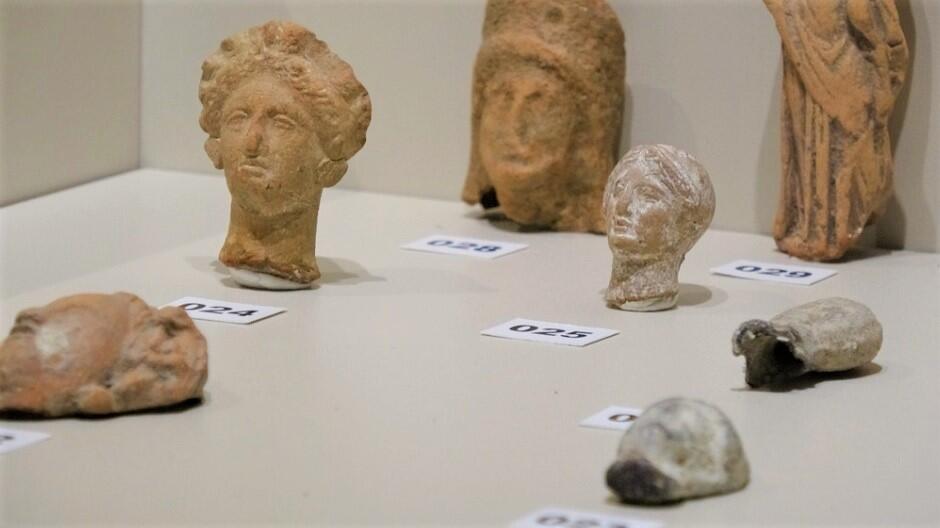
Out of place artifacts (OOPART) are proof that mankind has been here for millions of years, contrary to the biblical story that dates mankind back to approximately 6,000 years ago.
Perhaps the distortion of artifical time through the Julian and Gregorian calendars were created to keep our minds trapped within this B.C. and A.D. timeframe?
The Antikythera Mechanism
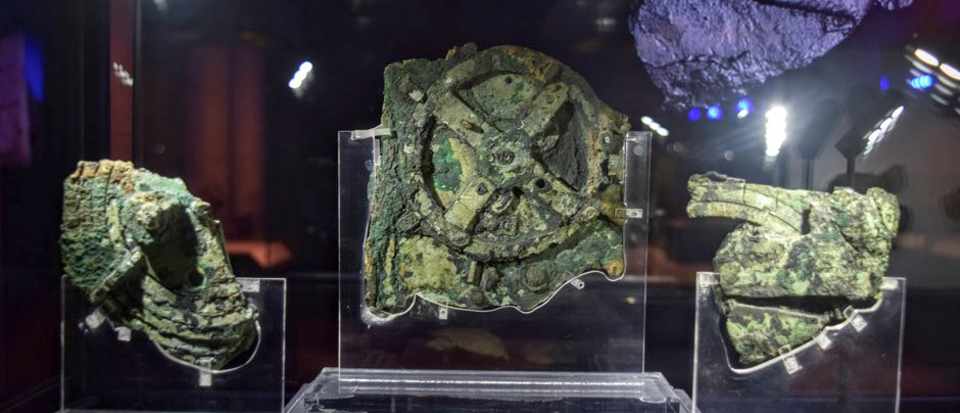
The Antikythera mechanism is an ancient analog computer designed to calculate astronomical positions. It was recovered in 1900–1901 from the Antikythera wreck, but its significance and complexity were not understood until a century later. Jacques Cousteau visited the wreck in 1978 Antikythera Mechanismbut, although he found new dating evidence, he did not find any additional remains of the Antikythera mechanism. The construction has been dated to the early 1st century BCE. Technological artifacts approaching its complexity and workmanship did not appear again until the 14th century AD, when mechanical astronomical clocks began to be built in Western Europe.
Professor Michael Edmunds of Cardiff University, who led a 2006 study of the mechanism, said
This device is just extraordinary, the only thing of its kind. The design is beautiful, the astronomy is exactly right. The way the mechanics are designed just makes your jaw drop. Whoever has done this has done it extremely carefully … in terms of historic and scarcity value, I have to regard this mechanism as being more valuable than the Mona Lisa.
—30 November 2006
The Antikythera mechanism is displayed at the National Archaeological Museum of Athens, accompanied by a reconstruction made and donated to the museum by Derek de Solla Price. Other reconstructions are on display at the American Computer Museum in Bozeman, Montana, the Children’s Museum of Manhattan in New York, in Kassel, Germany, and at the Musée des Arts et Métiers in Paris.
The mechanism was housed in a wooden box approximately 340 × 180 × 90 mm in size and comprised 30 bronze gears (although more could have been lost). The largest gear, clearly visible in fragment A, was approximately 140 mm in diameter and most likely had 223 teeth. The mechanism’s remains were found as 82 separate fragments of which only seven contain any gears or significant inscriptions.
This machine has the oldest known complex gear mechanism and is sometimes called the first known analog computer, although the quality of its manufacture suggests that it may have had a number of undiscovered predecessors during the Hellenistic Period. It appears to be constructed upon theories of astronomy and mathematics developed by Greek astronomers and is estimated to have been made around 100 BC. In 1974, British science historian and Yale University Professor Derek de Solla Price concluded from gear settings and inscriptions on the mechanism’s faces that the mechanism was made about 87 BC and was lost only a few years later.
Baghdad Battery
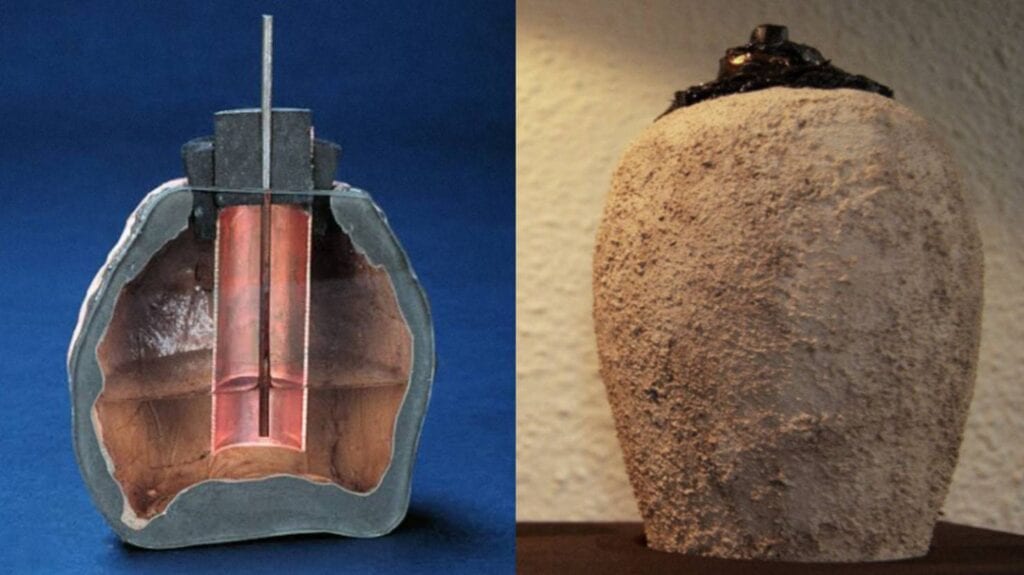
The Baghdad Battery, sometimes referred to as the Parthian Battery, is the common name for a Baghdad Batterynumber of artifacts created in Mesopotamia, during the dynasties of Parthian or Sassanid period (the early centuries AD), and probably discovered in 1936 in the village of Khuyut Rabbou’a, near Baghdad, Iraq. These artifacts came to wider attention in 1938 when Wilhelm König, the German director of the National Museum of Iraq, found the objects in the museum’s collections. In 1940, König published a paper speculating that they may have been galvanic cells, perhaps used for electroplating gold onto silver objects. Though far from settled, this interpretation continues to be considered as at least a hypothetical possibility. If correct, the artifacts would predate Alessandro Volta’s 1800 invention of the electrochemical cell by more than a millennium.
The artifacts consist of terracotta pots approximately 130 mm (5 in) tall (with a one-and-a-half-inch Baghdad Batterymouth) containing a copper cylinder made of a rolled-up copper sheet, which houses a single iron or (galvanized nail) rod. At the top, the iron rod is isolated from the copper by bitumen plugs or stoppers, and both rod and cylinder fit snugly inside the opening of the jar, which bulges outward toward the middle. The copper cylinder is not watertight, so if the jar were filled with a liquid, this would surround the iron rod as well. The artifact had been exposed to the weather and had suffered corrosion, although mild given the presence of an electrochemical couple. This has led some to believe that wine, lemon juice, grape juice, or vinegar was used as an acidic electrolyte solution to generate an electric current from the difference between the electrochemical potentials of the copper and iron electrodes.
König thought the objects might date to the Parthian period (between 250 BC and AD 224). However, according to St John Simpson of the Near Eastern department of the British Museum, their original excavation and context were not well-recorded, so evidence for this date range is very weak. Furthermore, the style of the pottery is Sassanid (224-640).
Most of the components of the objects are not particularly amenable to advanced dating methods. The ceramic pots could be analysed by thermoluminescence dating, but this has not yet been done; in any case, it would only date the firing of the pots, which is not necessarily the same as when the complete artifact was assembled. Another possibility would be ion diffusion analysis, which could indicate how long the objects were buried.
Saqqara Bird
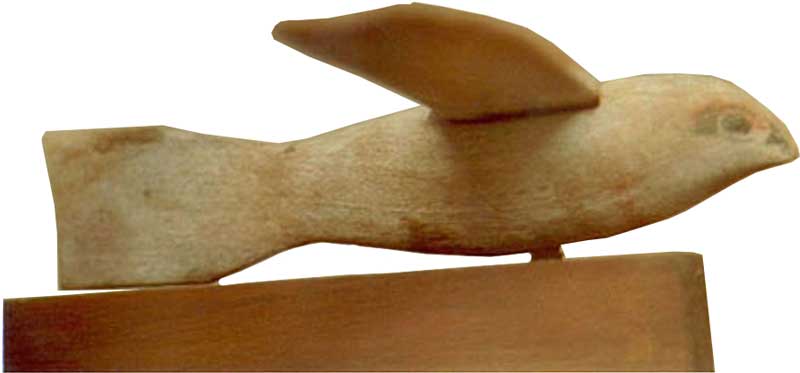
The Saqqara Bird is a bird-shaped artifact made of sycamore wood, discovered during the 1898 Saqqara Birdexcavation of the Pa-di-Imen tomb in Saqqara, Egypt. It has been dated to approximately 200 BCE, and is now housed in the Museum of Egyptian Antiquities in Cairo. The Saqqara Bird has a wingspan of 180 mm (7.1 in) and weighs 39.12 g (1.380 oz). Its function is not understood because of a lack of period documentation.
Some think the Saqqara Bird may be a ceremonial object because the falcon, the bird after which the Saqqara Bird is modeled, is the form most commonly used to represent several of the most important gods of Egyptian mythology, most notably Horus and Ra Horakhty.
Some have suggested that the Saqqara Bird may represent evidence that knowledge of the principles of aviation existed many centuries before such are generally believed to have first been discovered. Saqqara Bird Egyptian physician, archaeologist, parapsychologist and dowser Khalil Messiha has speculated that the ancient Egyptians developed the first aircraft. He wrote that it “represents a diminutive of an original monoplane still present in Saqqara.” He also claimed that the Saqqara Bird could function as a glider if it had a horizontal tailplane, which he “suppose[d] was lost,” and noted that the Egyptians often placed miniaturized representations of their technology in their tombs.
Messiha contended that the Saqqara Bird differs significantly from other statues and models of birds housed in the Cairo museum. According to Messiha, the Saqqara Bird has a vertical tailplane which is unlike the generally horizontal shape of a real bird’s tail. Richard P. Hallion described this fin as “shaped as if the bird had twisted its tail feathers.” It is also legless and has wings set at an angle Messiha sees as similar to that of modern aircraft, which he considered an attempt to create aerodynamic lift.
Quimbaya Artifacts
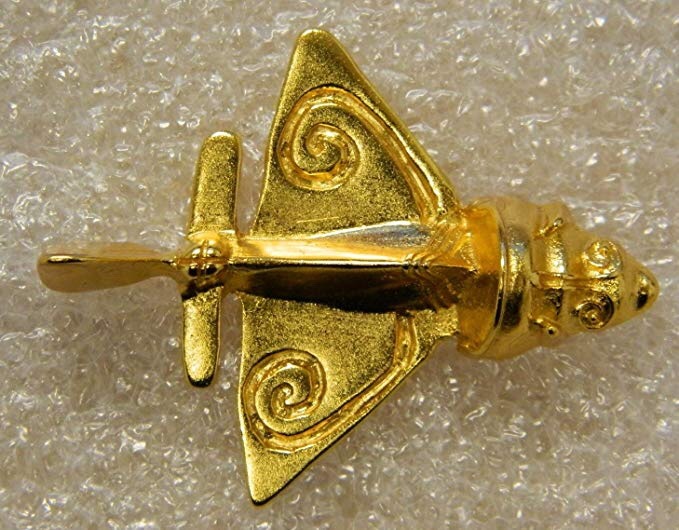
Quimbaya ArtifactsThe Quimbaya artifacts are several dozen golden objects, found in Colombia, made by the Quimbaya civilization culture, dated around 1000 CE, a few of which (the so-called Quimbaya airplanes) are supposed by ancient astronauts theorists to represent modern airplanes, and therefore to be out-of-place artifacts. The whole of the figurines, measuring 2 to 3 inches (5 to 7.5 cm) each, are described in mainstream archaeology as depicting birds, lizards, amphibians and insects common in that region and period, some of them highly stylized, as in the Gold Museum, Bogotá.
In 1994, Germans Peter Belting and Conrad Lubbers created simplified radio-controlled scale models of these objects and showed that their models, which lack some convoluted features present in the real figurines, could fly.
Critics of the modern-day airplane interpretation argue that the pre-Columbian culture in South America did not have the knowledge nor the technology to manufacture airplanes.
Crystal Skulls
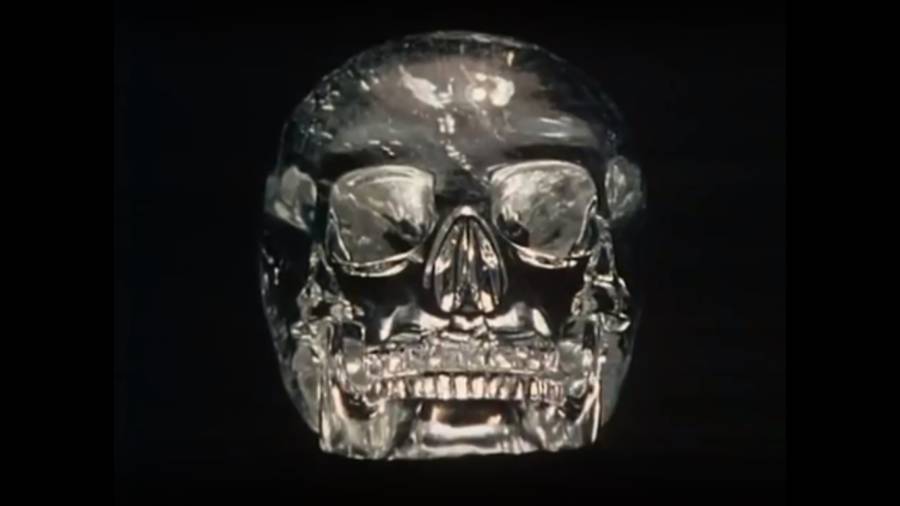
The crystal skulls are a number of human skull hardstone carvings made of clear or milky white Crystal Skullsquartz, known in art history as “rock crystal”, claimed to be pre-Columbian Mesoamerican artifacts by their alleged finders; however, none of the specimens made available for scientific study have been authenticated as pre-Columbian in origin. The results of these studies demonstrated that those examined were manufactured in the mid-19th century or later, almost certainly in Europe during a time when interest in ancient culture was abundant. Despite some claims presented in an assortment of popularizing literature, legends of crystal skulls with mystical powers do not figure in genuine Mesoamerican or other Native American mythologies and spiritual accounts.
The skulls are often claimed to exhibit paranormal phenomena by some members of the New Age movement. The type of crystal was determined by examination of chlorite inclusions, and is only to be found in Madagascar and Brazil, and thus unobtainable or unknown within pre-Columbian Mesoamerica.
Some believers in the paranormal claim that crystal skulls can produce a variety of miracles. Anna Mitchell-Hedges claimed that the skull she allegedly discovered could cause visions, cure cancer, that she once used its magical properties to kill a man, and that in another instance, she saw in it a premonition of the John F. Kennedy assassination.
Crystal skulls are also referenced by author Drunvalo Melchizedek in his book Serpent of Light. He writes that he came across indigenous Mayan descendants in possession of crystal skulls at ceremonies at temples in the Yucatán, which he writes contained souls of ancient Mayans who had entered the skulls to await the time when their ancient knowledge would once again be required.
Coso Artifact -The 500,000 Year Old Spark Plug
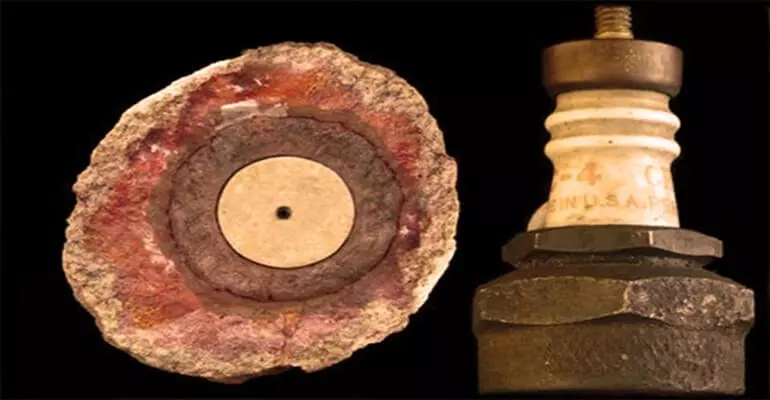
Coso Artifact -The 500,000 Year Old Spark PlugThe Coso artifact is an object claimed by its discoverers to be a spark plug found encased in a lump of hard clay or rock on February 13, 1961 by Wallace Lane, Virginia Maxey, and Mike Mikesell while they were prospecting for geodes near the town of Olancha, California, and long claimed as an example of an out-of-place artifact.
If a spark plug is encased in a 500,000-year-old “geode,” this finding would represent a substantial scientific and historical anomaly, as spark plugs were invented in the 19th century. Critics have argued, however, that the concretion, not geode, containing the Coso artifact can be explained by known natural processes and credible evidence for it being 500,000 years old is completely lacking.
Some theories of the origin of this out of place artifact include:
*An ancient advanced civilization (such as Atlantis);
*Prehistoric extraterrestrial visitors to Earth;
*Human time-travellers from the future leaving or losing the artifact during a visit to the past.
Klerksdorp Sphere
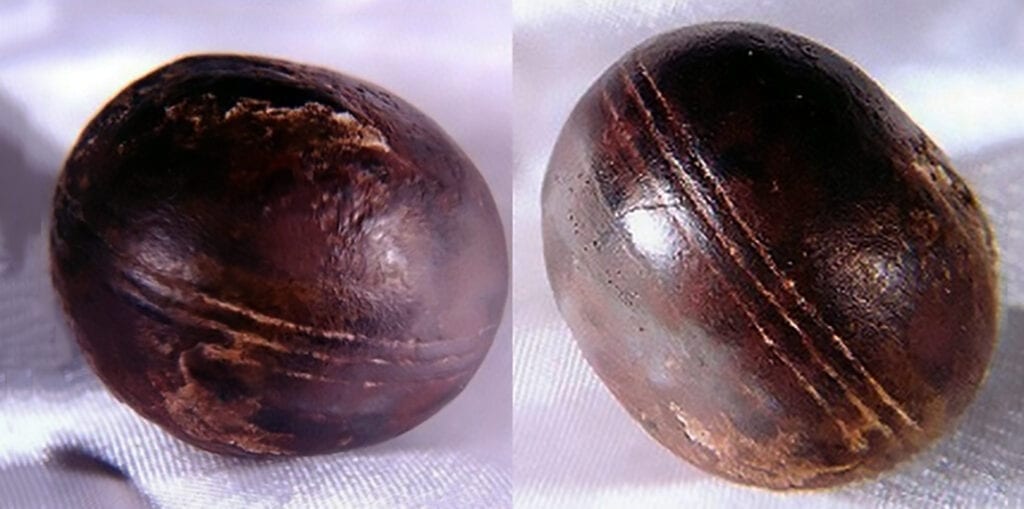
Klerksdorp spheres are small objects, often spherical to disc-shaped, that have been collected by Klerksdorp spheresminers and rockhounds from 3-billion-year-old pyrophyllite deposits mined by Wonderstone Ltd., near Ottosdal, South Africa. They have been cited by some alternative researchers and reporters in books, popular articles, and many web pages, as inexplicable out-of-place artifacts that could only have been manufactured by intelligent beings. Geologists who have studied these objects argue that the objects are not manufactured, but are rather the result of natural processes.
M.Cremo wrote in his great book “The hidden history of the human race” about spheres: “Over the past several decades, South African miners have found hundreds of metallic spheres, at least one of which has three parallel grooves running around its equator.”
The spheres are of two types – “one of solid bluish metal with white flecks, and another which is a hollow ball filled with a white spongy center” (Jimison 1982).
Roelf Marx, curator of the museum of Klerksdorp, South Africa, where some of the spheres are housed, said, “The spheres are a complete mystery. They look man-made, yet at the time in Earth’s history when they came to rest in this rock no intelligent life existed. They´e nothing like I have ever seen before.”
“There is nothing scientific published about the globes, but the facts are: They are found in pyrophyllite, which is mined near the little town of Ottosdal in the Western Transvaal. This pyrophyllite is a quite soft secondary mineral with a count of only 3 on the Mohs’ scale and was formed by sedimentation about 2.8 billion years ago. On the other hand the globes, which have a Fossilized Hand Printfibrous structure on the inside with a shell around it, are very hard and cannot be scratched, even by steel.”
Fossilized Hand Print
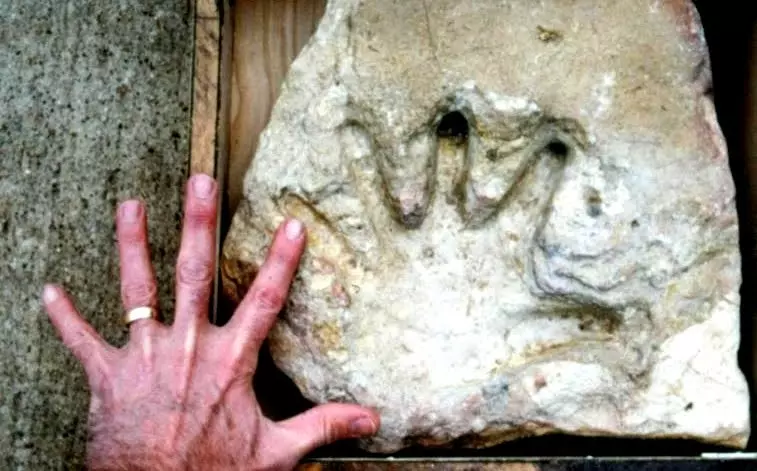
This fossil which corresponds perfectly to a human handprint shows astounding detail.
Even the print of the thumbnail can be seen.
It is found in the Glen Rose limestone which is designated as Middle Cretaceous, supposedly 110 million years old and contemporary with the dinosaurs!
Giant Footprint in Billion-Year-Old Granite
In 2002, James Snyder discovered a giant, fossilized footprint embedded in billion-year-old granite in California’s Cleveland National Forest.
Giant Footprint in Billion-Year-Old Granite
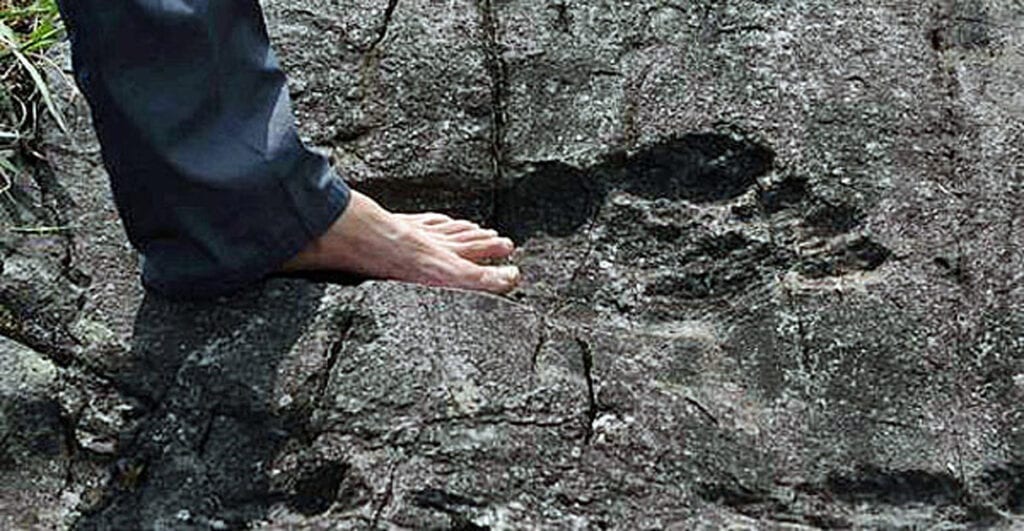
Michael Tellinger tells of an even larger GIANT footprint!
Stone Spheres of Costa Rica
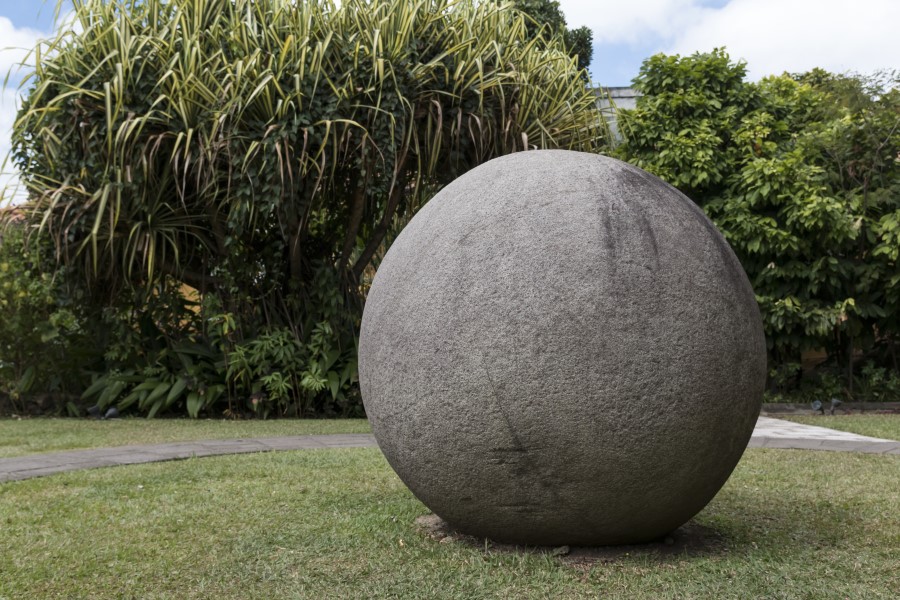
The stone spheres (or stone balls) of Costa Rica are an assortment of over three hundred Stone Spheres of Costa Ricapetrospheres in Costa Rica, located on the Diquís Delta and on Isla del Caño. Locally, they are known as Las Bolas. The spheres are commonly attributed to the extinct Diquís culture and are sometimes referred to as the Diquís Spheres. They are the best-known stone sculptures of the Isthmo-Colombian area.
Numerous myths surround the stones, such as they came from Atlantis, or that they were made as such by nature. Some local legends state that the native inhabitants had access to a potion able to soften the rock. Research led by Joseph Davidovits of the Geopolymer Institute in France has been offered in support of this hypothesis, but it is not supported by geological or archaeological evidence. (No one has been able to demonstrate that gabbro, the material from which most of the balls are sculpted, can be worked this way.)
In the cosmogony of the Bribri, which is shared by the Cabecares and other American ancestral groups, the stone spheres are “Tara’s cannon balls”. Tara or Tlatchque, the god of thunder, used a giant blowpipe to shoot the balls at the Serkes, gods of winds and hurricanes, in order to drive them out of these lands.
It has been claimed that the spheres are perfect, or very near perfect in roundness, although some spheres are known to vary by 5 centimetres (2.0 in) in diameter until 257 centimetres (104 in). Also the stones have been damaged and eroded over the years, and so it is impossible to know exactly their original shape. A review of the way that the stones were measured by Lothrop reveals that claims of precision are due to misinterpretations of the methods used in their measurement. Although Lothrop published tables of ball diameters with figures to three decimal places, these figures were actually averages of measurements taken with tapes that were nowhere near that precis
Lolladoff Plate
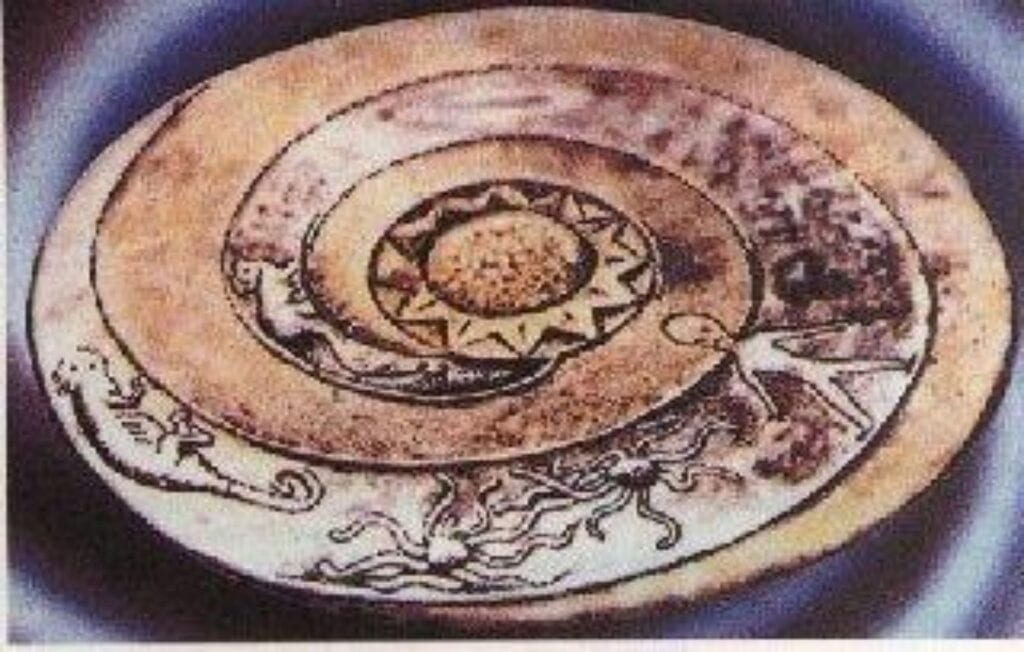
This plate called ‘The Lolladoff plate’ is a 12,000 year old stone dish found in Nepal. It clearly shows a disk-shaped UFO (top of pic, hard to see from the angle of the plate, however). There is also a figure on the disc looking remarkably similar to a Grey alien. Notice the spiral galaxy shape as well, with the alien inside it and the ufo at the beginning of it.
Galaxies come in spiral shapes and throughout India, Egypt and Peru and other ancient sites the spiral shape is very often seen. This galaxy spiral is probably there to tell us that they flew here from another galaxy, buy more probably the spiral was their symbol signifying their knowledge of the universe, as the spiral is the most widely recognizable shape in the universe and in it’s creation. The spiral shape also signifies energy.
The spiral is a geometric shape found in many places throughout nature, in many ancient cultures it is portrayed and given great meaning. Two of the most popular spiral shapes however not always circular or curved in shape are the Fibonacci spiral and Golden spiral. The spiral is also well represented through sacred geometry. The spiral holds many mysteries, and its shape is universal, its constant depiction in ancient texts, pictures, and symbology is obviously of great importance.
In5D Addendum
It has become blatantly obvious that our true human origins have been obscured from academia, all the way from grade school through college. Even within religion, we are expected to believe that humanity is only 6,000 years old or so.
The time is drawing nearer when our true human origins will be officially revealed as Pluto transits through Capricorn. Pluto is known as the “Destroyer” and will tear down these false teachings that have kept us oppressed for thousands of years. From there, official recognition of our galactic neighbors and friends will follow.
This WILL happen in your lifetime, so hang in there, stay positive, and spread the love!




